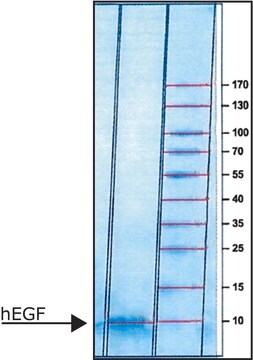11074547001
Roche
Insulin-Transferrin-Sodium Selenite Supplement
suitable for cell culture, lyophilized, pkg of 50 mg (for 5 l medium)
Synonym(s):
ITS
About This Item
Recommended Products
biological source
human serum (transferrin)
synthetic (sodium selenite)
Quality Level
recombinant
expressed in human cells
sterility
non-sterile; 0.2 μm filtered
Assay
>98% (Transferrin, SDS-PAGE)
>99% (Insulin, HPLC)
>99% (Sodium selenite)
form
lyophilized
packaging
pkg of 50 mg (for 5 l medium)
manufacturer/tradename
Roche
technique(s)
cell culture | mammalian: suitable
solubility
water: miscible
storage temp.
2-8°C
Gene Information
bovine ... INS(280829)
human ... TFRC(7037)
General description
Source: Insulin- bovine pancreas; transferrin- human serum; Sodium selenite-synthetic
Application
Preparation Note
Storage conditions (working solution): -15 to -25 °C.
Prepare appropriate aliquots and avoid repeated freezing and thawing.
Reconstitution
Further dilution with culture medium.
Other Notes
Storage Class Code
11 - Combustible Solids
WGK
WGK 1
Flash Point(F)
does not flash
Flash Point(C)
does not flash
Certificates of Analysis (COA)
Search for Certificates of Analysis (COA) by entering the products Lot/Batch Number. Lot and Batch Numbers can be found on a product’s label following the words ‘Lot’ or ‘Batch’.
Already Own This Product?
Find documentation for the products that you have recently purchased in the Document Library.
Customers Also Viewed
Our team of scientists has experience in all areas of research including Life Science, Material Science, Chemical Synthesis, Chromatography, Analytical and many others.
Contact Technical Service








